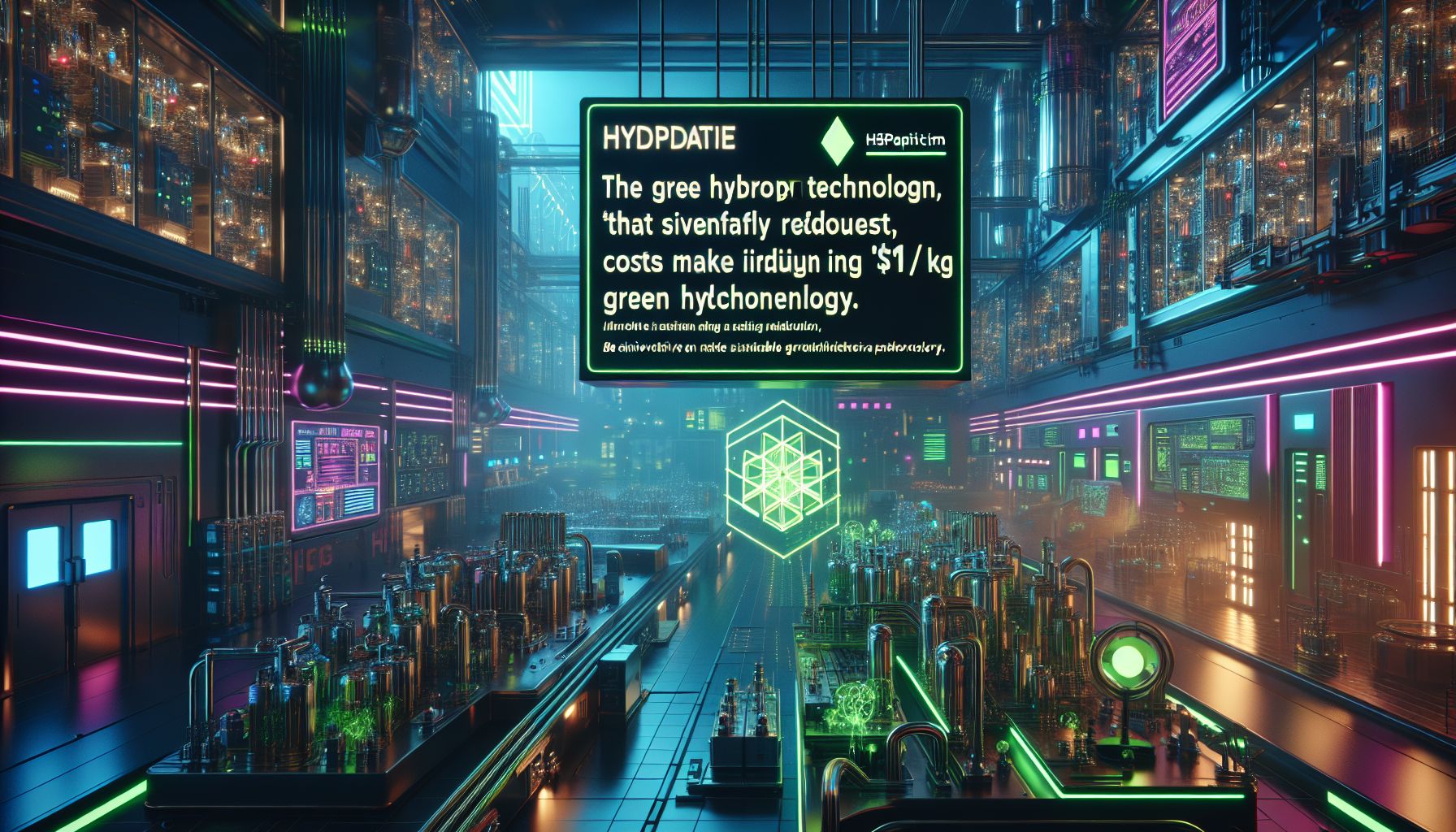Innovation Slashes Green Hydrogen Costs: $1/kg Within Reach

Amsterdam, Thursday, 16 October 2025.
VSParticle’s new tech cuts iridium use by 90%, making $1/kg green hydrogen viable. This breakthrough could revolutionise clean energy by overcoming iridium scarcity, crucial for sustainable hydrogen economy.
VSParticle’s Breakthrough in Iridium Utilisation
Hey folks, something exciting is brewing in the world of green hydrogen. VSParticle, in collaboration with Plug Power and the University of Delaware’s Center for Clean Hydrogen, has unveiled a nanoporous catalyst layer technology that cuts iridium use by an impressive 90% [1][2][3]. Imagine using less of one of the rarest metals on Earth—iridium—yet achieving superior performance in proton exchange membrane (PEM) electrolysers. This development is not just about saving iridium; it’s about making green hydrogen production as affordable as $1 per kilogram [1][2].
Collaborative Efforts and Industry Impact
You might be wondering, how did they achieve such a feat? It’s teamwork! VSParticle worked alongside Plug Power and the University of Delaware, reaching an iridium coating ratio of 0.4mg/cm², which surpasses the US Department of Energy’s targets for 2026 [1][3][4]. Dr Thomas Valdez from Plug Power is thrilled, describing the performance as ‘exceptional.’ This innovation is a game-changer, especially for an industry hampered by the limited availability of iridium, which only sees about 7-8 tonnes mined globally each year [1][2][3].
Scaling Towards Commercial Viability
VSParticle isn’t stopping at just a breakthrough. They’re scaling their in-house coating capacity to kickstart pilot and early commercial projects with multiple PEM electrolyser manufacturers [1][2][5]. The plan is to have testing programs up and running by 2026. This move signals a shift towards a commercially viable solution for green hydrogen, potentially disrupting how we view energy production and sustainability [2][5].
The Bigger Picture: Sustainable Hydrogen Economy
So, what does this mean for us? Well, it could accelerate the transition to a sustainable hydrogen economy, making clean energy more accessible and affordable [1][2][6]. With potential applications in anion exchange membrane electrolysis, this technology doesn’t just promise cheaper hydrogen—it might also transform the economics of green hydrogen production [2][5][6]. The future of energy is looking bright, and as Aaike van Vugt, CEO of VSParticle, puts it, ‘The hydrogen revolution isn’t coming—it’s already here’ [2][6].